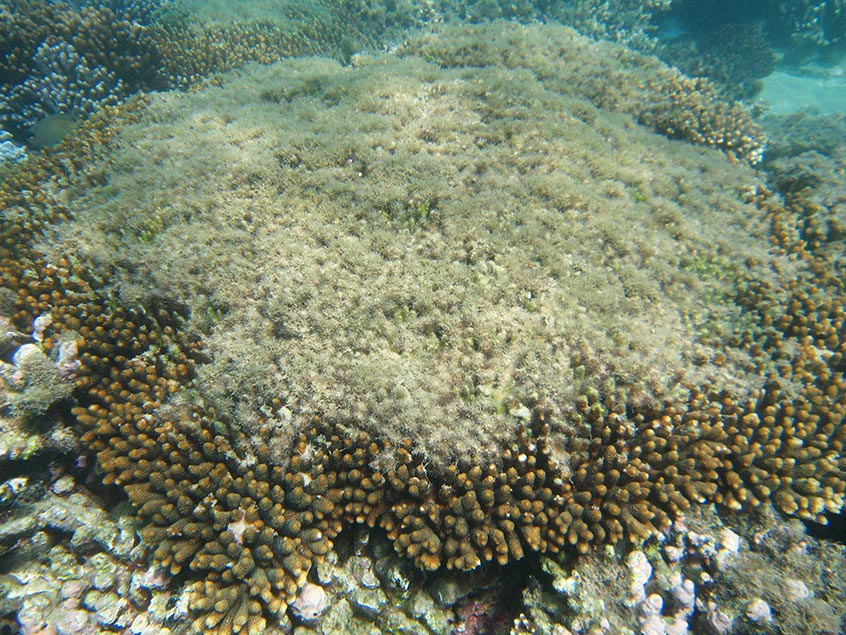Biocontrol of macroalgae

Photo by J Maynard, Copyright, Commonwealth of Australia (GBRMPA)
Functional objective:
Biocontrol to restore coral reef health and resilience
Delivery method:
Biocontrol of macroalgae
Deployment scale:
Small (a few hectares, a single reef)
Subprogram:
Although naturally-occurring and offering positive contributions to reef ecology as a food, habitat and fish nursery, macroalgae – or seaweed – when excessive, can compete with, and threaten coral on nearshore reefs.
Its volume on reefs can increase through excess nutrients from human disturbances and pollution, such as agricultural run-off. Macroalgae can negatively affect coral by competing for space and other resources, overshading and transmitting disease. It can also reduce coral larvae production, and inhibit young coral settlement, growth and survival.
Existing manual removal methods are labour-intensive, requiring divers, robots and small and large vessels.
This potential intervention could include manual, automated or biological removal of macroalgae from reefs to promote coral recruitment, growth and survival.
The removal methods may require in situ or land-based propagation of biocontrol agents such plant-eating urchins and fish.






